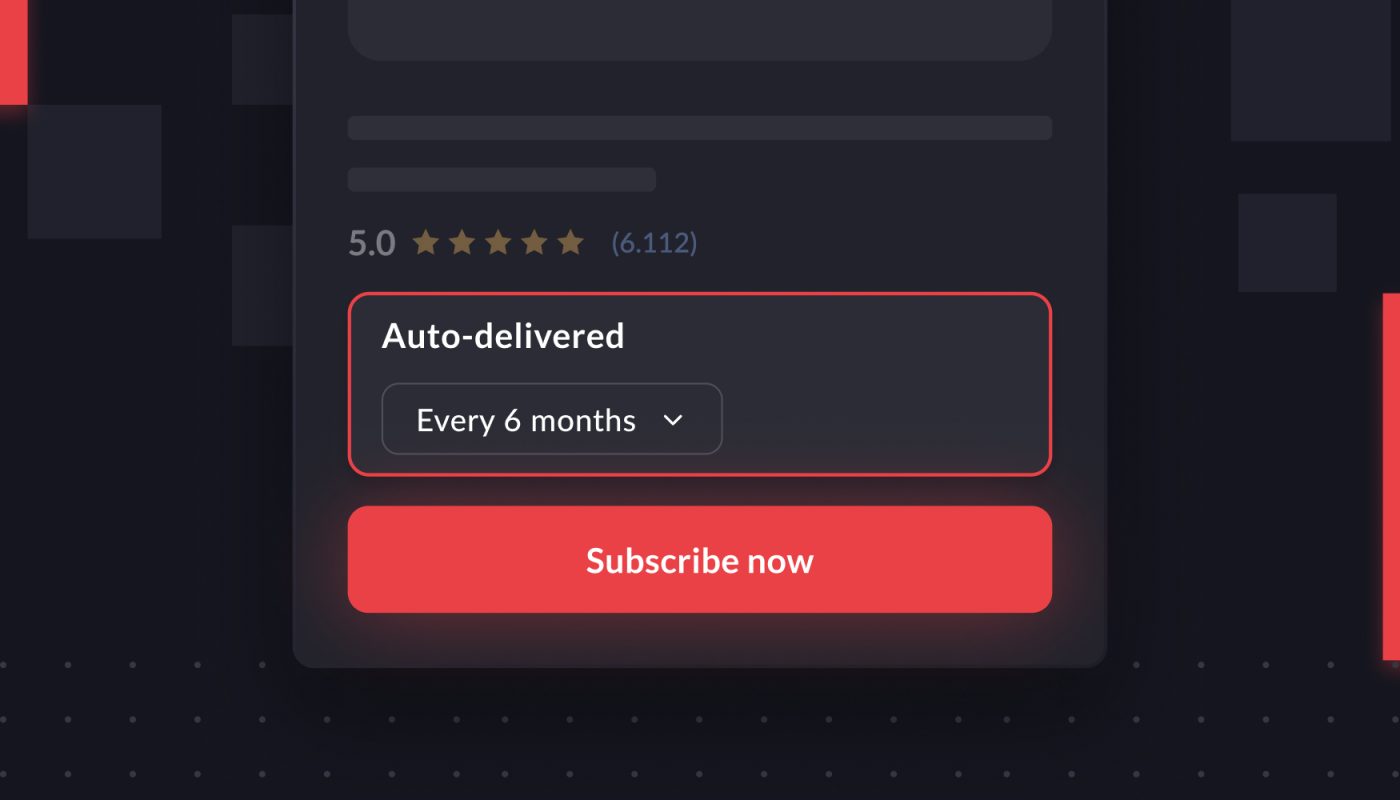For eligible brands, Amazon’s subscription program is a sleeper hit. About a third—35%—of all Amazon shoppers have at one point used Amazon’s Subscribe & Save tool. That includes a slight majority (51%) of Amazon Prime users.
The way it works is simple. Fans of a brand choose to automatically re-order their favorite product at a frequency of anywhere from every 1 month to every 6 months.
Most brands, but not all, offer a discount in exchange for subscribing. A SnS discount can range anywhere from 0% to 15%.
SnS subscriptions are not for everyone. They make most sense for CPG brands that produce refillable items—like, say, laundry detergent.
The upside: SnS helps you maintain consistent inventory and revenue predictions. It also can increase sales. SnS subscribers have among the lowest churn rates of any retail subscriptions.
The downside: When you offer a discount with SnS, you sacrifice a slice of your profit margin.
How do you track SnS analytics?
Amazon publishes two key reports that measure the number of active subscribers on each ASIN: the Subscribe & Save Forecasting Report and Subscribe & Save Performance Report.
The data from these reports can be difficult to manage, however. When you download these reports from Amazon, you start with a .txt file. You then have to convert all of those files into pivot tables that map out your SnS numbers.
It looks something like this:
Getting a complete view of SnS subscriptions across your products is important, because it helps inform metrics like inventory data.
Let’s say your product suddenly spikes in popularity. Mapping the uptick in SnS conversions gives you an early warning sign of how much inventory you need down the line.
Tools like Intentwise automatically download and visualize SnS data for you, via API.
Tracking SnS data through an API connection also makes it easier to apply SnS discounts and coupons, and factor them into your overall item-level profitability numbers.
How do you grow your SnS customer base?
Re-targeting. One of the simplest ways to convert a new customer is to re-target them with ads touting your SnS deal.
Build an audience of, say, second-time purchasers of your product, who have already proven they are return purchasers. Then push out a DSP ad discussing the upsides of your SnS deal.
Content. Another way to draw in new SnS conversions is to heavily promote SnS in your content on Amazon. Mention your SnS deals in A+ content, across your Brand Store, and more.
Some brands also offer a coupon to customers who Subscribe & Save for the first time, which can be a great way to get people in the door.
Go further with Subscribe & Save in Amazon Marketing Cloud
In Amazon Marketing Cloud, Amazon’s newest analytics tool, you can track which actions your customers most often take before they Subscribe & Save.
For example, you could build a query that measures which purchase most people subscribe on. Let’s say you discover a customer’s third purchase is the one when they are most primed to subscribe.
Or maybe we know a certain combination of ad views, or a certain purchase speed, indicates a likely SnS customer. You can build an audience of people who are on the precipice of SnS conversion, and then run ads that might convince them to subscribe.
(You can do this all easily in Intentwise Explore, our software platform that supercharges AMC. Choose from our pre-vetted library of queries and audiences, schedule them to run at intervals of your choice, and get the results graphed and visualized for you.)
How does SnS in AMC work? There are two data sets for Subscribe & Save conversions in Amazon Marketing Cloud: the free version and the paid data set.
- In the free version, you can only see ad-attributed SnS conversions.
- Want to track shoppers who subscribe organically, without having recently seen an ad? AMC’s Paid Features data set includes data about all SnS purchases, whether they are organic or ad-attributed.
How many of my sales are coming from Subscribe & Save?
The Amazon Marketing Cloud paid data set now segments out repeat purchases SnS purchases with a unique sns_subscription_id. This way, you can track not just the first SnS conversion, but also repeat purchases made through SnS.
This is a big deal, because it lets you see for the first time how many of your overall sales are attributed to subscribers.
Curious what percentage of your monthly sales come from SnS purchases, or which ASINs have the highest share of SnS purchases? Run a query in Amazon Marketing Cloud to find out.
You can then also compare the Customer Long-Term Value of SnS vs. non-SnS subscribers, exclude SnS subscribers from your DSP campaigns, and so on. Download our Amazon Marketing Cloud whitepaper to learn more.
(Want more articles like these? Be sure to subscribe to our weekly newsletter)








